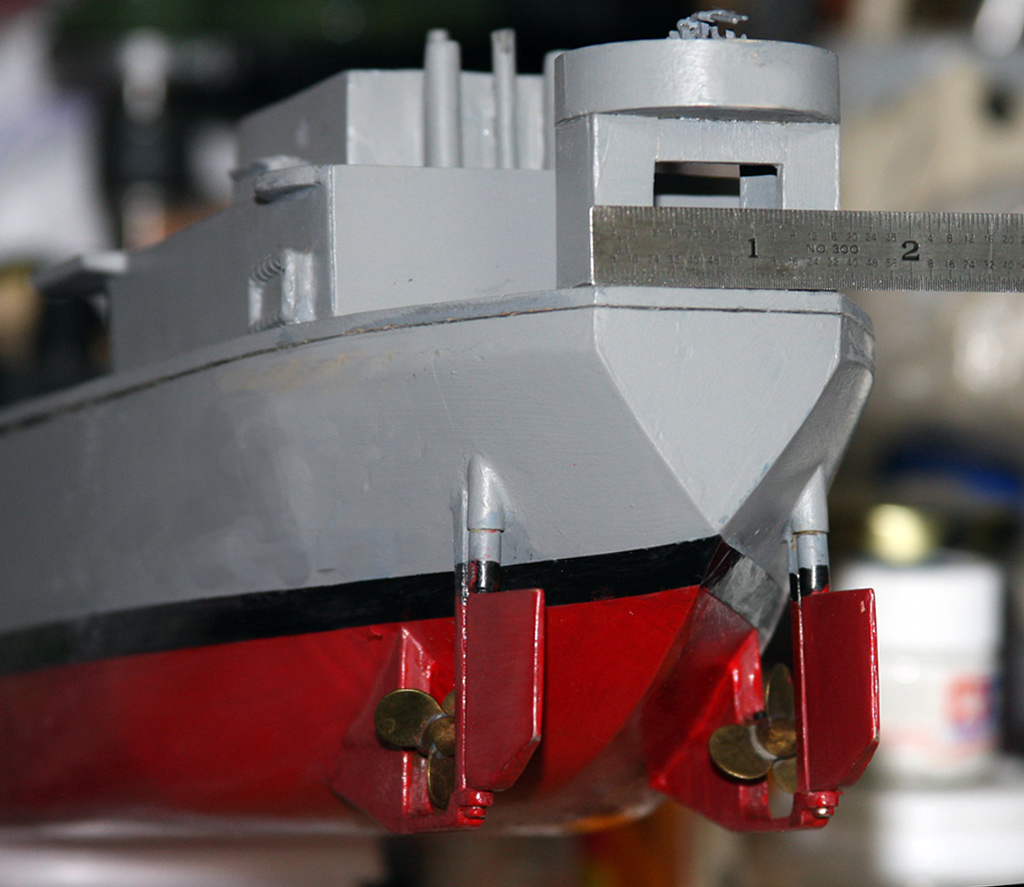Here's the story...
From Wikipedia:
LST-325 was launched on 27 October 1942, at
Philadelphia,
Pennsylvania. The ship operated in the
North Africa area and participated in the invasions at
Gela, Sicily and
Salerno, Italy. On 6 June 1944,
LST-325 was part of the largest armada in history by participating in the
Normandy Landings at
Omaha Beach. She carried 59 vehicles, 31 officers and a total of 408 enlisted men on that first trip. On her first trip back to England from France,
LST-325 hauled 38 casualties back to a friendly port. Over the next nine months, Navy records show
LST-325 made more than 40 trips back and forth across the
English Channel, carrying thousands of men and pieces of equipment needed by troops to successfully complete the liberation of Europe. The ship continued to run supply trips between
England and
France before returning to the
United States in March 1945.
LST-325 was decommissioned on 2 July 1946, at
Green Cove Springs, Florida, and laid up in the Atlantic Reserve Fleet.
The ship was placed in service with the
Military Sea Transportation Service in 1951 as USNS
T-LST-325, and took part in "Operation SUNAC" (Support of North Atlantic Construction), venturing into the
Labrador Sea,
Davis Strait, and
Baffin Bay to assist in the building of radar outposts along the eastern shore of Canada and western Greenland. Struck from the
Naval Vessel Register, on 1 September 1961,
T-LST-325 was transferred to the
Maritime Administration (MARAD) for lay up in the
National Defense Reserve Fleet.
Finally,
LST-325 was sent to
Greece on 1 September 1964, as part of the grant-in-aid program. She served in the
Hellenic Navy as RHS
Syros (L-144) from 1964 to 1999.
My acquaintance with this ship began in 2,000, when I read that a group of retired USN and US Coast Guard former LST sailors - average age 70! - found the ship rusting away in a Greek reserve fleet, and managed to buy it from the Greek government. They paid their own way to Greece, and then somehow - mostly by sheer determination and hard-headed idealism - got the engines running, and sailed it to the US East coast. I was told by a crew member that the ship was never altered once in Greek hands, so if the bridge was altered, it was done either during WWII, or during its stint with the Military Sea Transportation Service between 1951 and 1961. Everything else, according to the crew, was original, WWII issue, including its armament.
The voyage these old sailors took with this old ship, from Greece to the US, was epic. When they boarded the ship, they were not certain at all that the ship would survive the journey, but they were willing to take their chances. One humorous incident that occurred was that when they entered US territorial waters, the US government refused to allow the ship to come any closer, since it was still fully armed, yet flew no nation's flag. Not yet a museum ship, and no longer a commissioned ship in either the Greek or US navies, yet fully armed, it was classified as a pirate ship by the American government.
Today, the ship is one of the very few operational WWII museum ships in the world, and offers cruises several times a year. You can read the rest of the story on the USS LST Memorial, Inc. website, at
www.lstmemorial.orgIn 2003, I set out to build a working 1:144 RC model of an LST. Some of my fellow RC warship combat friends challenged me to build the model, equip it with working bow doors and ramp, sail it under fire to the Axis port in one of our campaign games, open the doors, lower the ramp, and drive an RC tank down the ramp, up the beach, and touch a flag in the heart of the enemy port. If I could do this, the Allies would win the game; if I failed, the Axis would be the victors.
My problem was that I could not tell from over a thousand LST photos I found on the web, nor from the only reference books I could find on the subject, how the bow doors actually worked, or how the ship could keep from flooding. They just don't show those details. I contacted the excellent crew of the LST 325, who agreed to crawl around in the bow, taking photos for me. I finally got everything I needed, and then only had to figure out how to make all of this work in 1:144 scale, while being shot at by CO2-powered guns. As it turned out, I had to fabricate scale rack-and-pinion gears to operate the doors, and a scale, chain-operated ramp to maintain watertight integrity.
Some additional challenges: building it to run aground high enough on the beach to unload the tank, without the tank falling into the pond; engineer the twin props and rudders so the bottom of the props and rudders would not drag on the sand; find an RC tank small enough to roll through the doors and down the ramp, and reliable enough to do this on demand, then roll across uneven sand and climb a hill to the flag; prevent the ship from sinking due to gun fire prior to landing on the beach (automatic bilge pump).
Long story made not so long, I successfully met the challenge, and the Allies won the war:



 Author
Topic: LST 325 - Last Unmodified WWII LST in the US (Read 11839 times)
Author
Topic: LST 325 - Last Unmodified WWII LST in the US (Read 11839 times)



